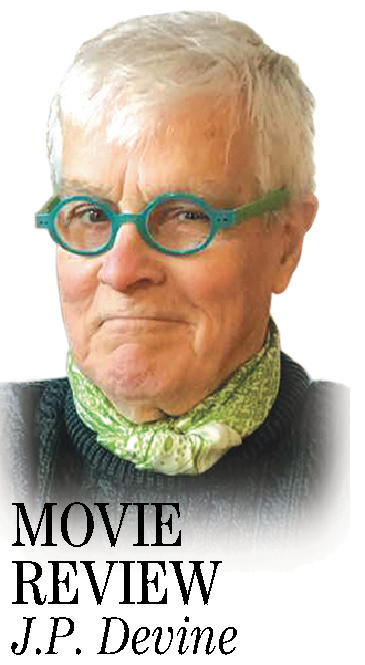In Dome Karukoski’s big new epic we’re given a huge middle section of the life of John Ronald Reuel Tolkien, the man who is best known as the author of the classic high fantasy books “The Hobbit,” “The Lord of the Rings” and “The Silmarillion,” none of which I had, after browsing the first, much interest in.
J.R.R. Tolkien has long been considered the “father “of modern fantasy literature, and sixth on a list of “The 50 greatest British writers since 1945,” according to The Times. To every young and old fan of Tolkien, no further introduction is required.
Tolkien’s books have sold more than 250 million copies and are printed in over 56 languages. So there.
Here in Finnish director Karukoski’s big canvas of a film, Tolkien’s early and middle life are beautifully played out in small, sensitive and touching scenes, interspersed with majestic sweeping canvases of the Great War’s most famous slaughterhouse, the battle known as The Somme, filmed in horrifying details by cinematographer Lasse Frank Johannessen, with a score by the great Thomas Newman.
The story begins with the young Tolkien brothers John (Harry Gilby) and young Hilary’s (Guillermo Bedward) early days in Birmingham, England, when both parents have died rather young, leaving them orphans and put in foster care.
While there, John is smitten by a fellow boarder, Edith (a mesmerizing Lily Collins.)
The ups and downs of their and other lives continue through his early student years and on to Oxford at the very end, with children in the autumn fields of England, where the older John (Nicholas Hoult) finally puts together his famous epic masterpieces.
The very early days when the boys are left in the gentle but firm care of the local priest (Colm Meaney) and on into the dimly lighted musty halls of Oxford are beautifully framed by cameraman Johannessen, but often seem to linger too long through multiple conversations littered with drinking and cheerful camaraderie.
What brings the film alive are the stunning CGI scenes of Battle of the Somme.
I think that one would have to look to the genius of art director Paul Cowell and the overall talents of Colleen Kelsall, who must have provided the fearsome and jaw-dropping scenes of the dead soldiers.
One scene in particular, shot from above, shows John, shell shocked, near death and lying covered by a blanket. The camera pulls up and back to reveal a muddy water hole surrounded by what appear to be over 500 dead soldiers. Not since Ernest Haller’s shot of the dying soldiers in “Gone With the Wind” have we seen such a gut-wrenching tapestry of the brutal untidiness of death. Bravo.
“Tolkien” is, from start to finish, a beautiful and proper very British biography, full of all the little things the British do so well, those quiet, “be calm and carry on” moments that find their way even into the inferno of war. A splendid job well done.
J.P. Devine, of Waterville, is a former stage and screen actor.
Copy the Story LinkSend questions/comments to the editors.



Success. Please wait for the page to reload. If the page does not reload within 5 seconds, please refresh the page.
Enter your email and password to access comments.
Hi, to comment on stories you must . This profile is in addition to your subscription and website login.
Already have a commenting profile? .
Invalid username/password.
Please check your email to confirm and complete your registration.
Only subscribers are eligible to post comments. Please subscribe or login first for digital access. Here’s why.
Use the form below to reset your password. When you've submitted your account email, we will send an email with a reset code.